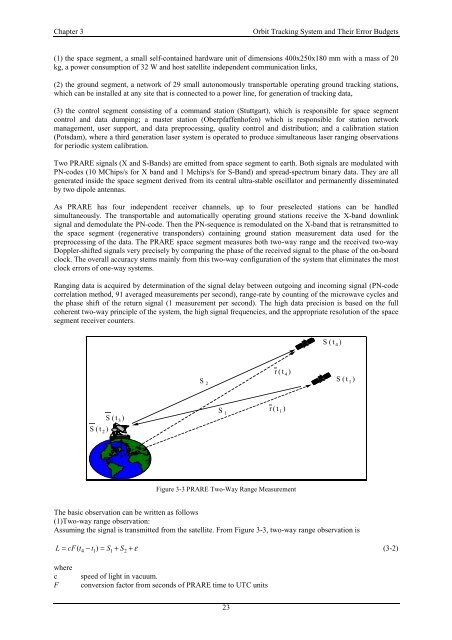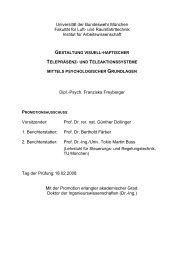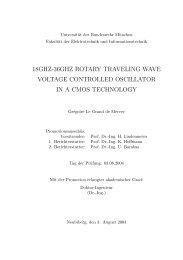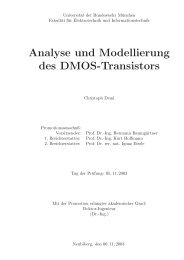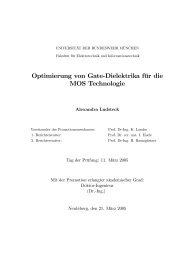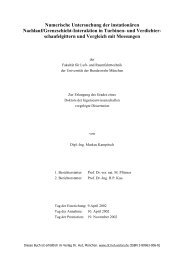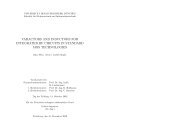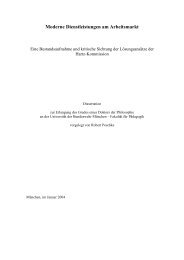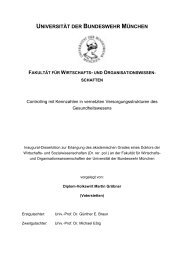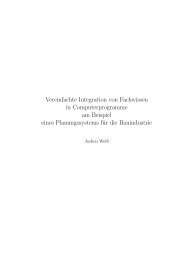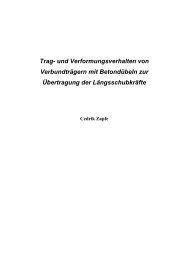Precise Orbit Determination of Global Navigation Satellite System of ...
Precise Orbit Determination of Global Navigation Satellite System of ...
Precise Orbit Determination of Global Navigation Satellite System of ...
Create successful ePaper yourself
Turn your PDF publications into a flip-book with our unique Google optimized e-Paper software.
Chapter 3 <strong>Orbit</strong> Tracking <strong>System</strong> and Their Error Budgets<br />
(1) the space segment, a small self-contained hardware unit <strong>of</strong> dimensions 400x250x180 mm with a mass <strong>of</strong> 20<br />
kg, a power consumption <strong>of</strong> 32 W and host satellite independent communication links,<br />
(2) the ground segment, a network <strong>of</strong> 29 small autonomously transportable operating ground tracking stations,<br />
which can be installed at any site that is connected to a power line, for generation <strong>of</strong> tracking data,<br />
(3) the control segment consisting <strong>of</strong> a command station (Stuttgart), which is responsible for space segment<br />
control and data dumping; a master station (Oberpfaffenh<strong>of</strong>en) which is responsible for station network<br />
management, user support, and data preprocessing, quality control and distribution; and a calibration station<br />
(Potsdam), where a third generation laser system is operated to produce simultaneous laser ranging observations<br />
for periodic system calibration.<br />
Two PRARE signals (X and S-Bands) are emitted from space segment to earth. Both signals are modulated with<br />
PN-codes (10 MChips/s for X band and 1 Mchips/s for S-Band) and spread-spectrum binary data. They are all<br />
generated inside the space segment derived from its central ultra-stable oscillator and permanently disseminated<br />
by two dipole antennas.<br />
As PRARE has four independent receiver channels, up to four preselected stations can be handled<br />
simultaneously. The transportable and automatically operating ground stations receive the X-band downlink<br />
signal and demodulate the PN-code. Then the PN-sequence is remodulated on the X-band that is retransmitted to<br />
the space segment (regenerative transponders) containing ground station measurement data used for the<br />
preprocessing <strong>of</strong> the data. The PRARE space segment measures both two-way range and the received two-way<br />
Doppler-shifted signals very precisely by comparing the phase <strong>of</strong> the received signal to the phase <strong>of</strong> the on-board<br />
clock. The overall accuracy stems mainly from this two-way configuration <strong>of</strong> the system that eliminates the most<br />
clock errors <strong>of</strong> one-way systems.<br />
Ranging data is acquired by determination <strong>of</strong> the signal delay between outgoing and incoming signal (PN-code<br />
correlation method, 91 averaged measurements per second), range-rate by counting <strong>of</strong> the microwave cycles and<br />
the phase shift <strong>of</strong> the return signal (1 measurement per second). The high data precision is based on the full<br />
coherent two-way principle <strong>of</strong> the system, the high signal frequencies, and the appropriate resolution <strong>of</strong> the space<br />
segment receiver counters.<br />
S(t 2 )<br />
S(t 3 )<br />
S 2<br />
S 1<br />
23<br />
r(t 4 )<br />
r(t 1 )<br />
Figure 3-3 PRARE Two-Way Range Measurement<br />
S(t 4 )<br />
S(t 1 )<br />
The basic observation can be written as follows<br />
(1)Two-way range observation:<br />
Assuming the signal is transmitted from the satellite. From Figure 3-3, two-way range observation is<br />
L cF(<br />
t − t ) = S + S + ε<br />
(3-2)<br />
= 4 1 1 2<br />
where<br />
c speed <strong>of</strong> light in vacuum.<br />
F conversion factor from seconds <strong>of</strong> PRARE time to UTC units


